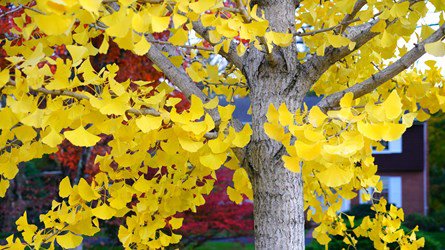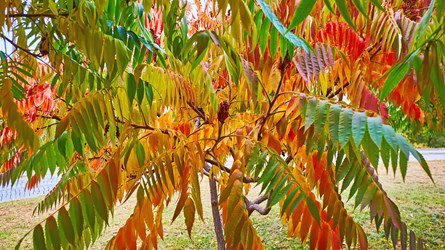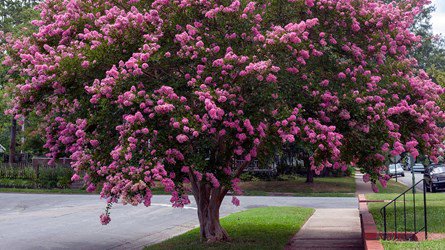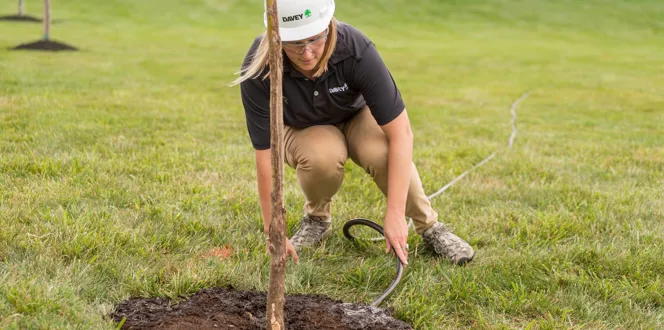Noticed higher energy or water bills this summer?
You may have if you’ve been cranking the AC or watering your garden more to combat the extreme heat. And you’re right to take action.
Instead of reacting, though, approach the dry spells and heat proactively. Pick drought-tolerant trees and choose water-wise planting and irrigation strategies, especially if your state is currently in severe drought. Remember though, wait until fall to plant new trees!
What States Are Currently Experiencing Drought?
As of June 7, 2022, 40.1 percent of the U.S. and 47.57 percent of the lower 48 states are in a drought, according to the National Integrated Drought Information System. The U.S. Drought Monitor reports the following states as currently having more severe droughts. It’s important to follow these trends as a part of water-wise landscaping.
- California: 97.5 percent of the state is in severe drought, 59.8 extremes, 11.6 exceptional
- Arizona: 77.9 percent of the state is in severe drought, 26.8 percent is in extreme drought, and 3 percent is in exceptional drought.
- Texas: 65 percent of the state is in severe drought, 40.1 percent extreme, 15.6 percent exceptional
- Utah: 99.9 percent of the state is in severe drought, 82.7 percent is in extreme drought, and 5.7 percent is in exceptional drought.
- Nevada: 99.5 percent of the state is in severe drought, 55.4 percent is in extreme drought, and 21.3 percent is in exceptional drought.
Water-Wise Landscaping: Things To Consider When Selecting Trees
Landscaping using drought-tolerant plants has become popular in recent years, particularly as a result of lingering drought in some areas.
To do this right, there are some principles you can follow in selecting the right plants for your water-wise landscape.
- Choose native tree species. Using the plant hardiness zone map, pick plants that are adapted to your local climate and site conditions. Native varieties will be able to better adapt to excessive limits that emerge in their natural environments. They also require less maintenance and fewer inputs.
- Opt for trees with smaller leaves. Small leaves like elm and linden cool more easily and provide better water efficiency than those with larger leaves.
- Look for trees with deep, upright crowns. They are more effective at using water than trees with flat, wide-spreading crowns.
- Seek trees with multilayered crowns. These trees like oaks and hickories have many living branches and leaf layers, making them more water-efficient than trees with leaf canopies that concentrate leaves in single layers along the outer edge of crowns like beech trees.
Tree Watering Tips For Drought-Like Conditions
While there is not an exact recipe to follow for how often and how much you should water your trees since this can be dependent on your soil type and rainfall, there are a few guidelines you can follow in your water-wise landscape.
Newly planted trees will always have the most critical watering needs so they can develop their root systems. This amounts to 2 to 3 gallons per day for 6- to 8-foot trees in the first few weeks of planting.
Established trees, on the other hand, can receive 2 to 3 gallons of water weekly. This is for a small tree planted one to two years ago. Larger trees will require more water, particularly during drought periods.
However, during drought, you should always follow water restrictions in your local area first.
As for a method of watering, slow and steady is the best approach. Slow watering delivers water 6 to 12 inches into the ground instead of just wetting the soil surface. This ensures water is targeted toward tree roots and doesn’t run off.
Heat-And Drought-Tolerant Plants
Set yourself up for success by picking trees in your planting zone that will also tolerate drought.
Note: Most of these trees offer the best drought tolerance when they are established.
- Eastern red cedar (zone 2-9): Heat-tolerant evergreen, and one of the most drought-tolerant evergreen trees.
- Bur oak (zone 3-8): Large shade tree with some drought tolerance.
- Northern red oak (zone 3-8): Fast-growing tree with fall color and some drought tolerance.
- Kentucky coffee tree (zone 3-8): Drought-resistant shade tree.
 Ginko (zone 3-8) : A unique tree with fan-shaped leaves that is not only drought tolerant, but also pollution-, salt-, pest-, and disease-resistant. (first photo)
Ginko (zone 3-8) : A unique tree with fan-shaped leaves that is not only drought tolerant, but also pollution-, salt-, pest-, and disease-resistant. (first photo)- Hackberry (zone 3-9): A tough tree that can stand up to strong winds.
- Elm (zone 3-9): A tree with a tall, arching habit and leafy canopy. There are disease-resistant varieties of this classic street tree as well.
- Hawthorne (zone 3-9): A smaller tree with four-season ornamental interest.
- Honey locust (zone 3-9): Smaller leaves assemble in the shape of bird feathers. This tree like moist soil but can survive periods of drought and high heat.
 Red maple (zone 3-9): This tree offers stunning fall color as well as drought tolerance.
Red maple (zone 3-9): This tree offers stunning fall color as well as drought tolerance.- Sumac (zone 3-9): Fern-like leaves give this tree character. (second photo)
- Chestnut oak (zone 4-8): Part of the white oak group, chestnut oak got its name from its preference for growing in mountainous, rocky soils.
- Eastern redbud (zone 4-9): This tree boasts a pink floral fireworks show in early spring.
- Sassafras (zone 4-9): Once established, this drought-tolerant tree can be used as a shade tree, specimen tree, or street tree.
- Shagbark hickory (zone 4-9): This type of large, shade tree has unique, peeling bark.
- Black walnut (zone 4-9): Known for its ornamental value, black walnuts have an attractive oval crown and edible nuts.
- Sawtooth oak (zone 5-8): Distinctive, sawtooth-edged leaves give his drought-hardy shade tree its name.
- London planetree (zone 5-9): Disease-resistance; mottled bark; and large, distinctive leaves with lighter undersides make London planetree a great choice.
- Chinese pistache (zone 6-9): A heat- and drought-tolerant tree that is also winder-hardy and pest- and fire-resistant.
 Loblolly pine (zone 6-9): A great screen tree with an oval shape that also provides shelter and food for wildlife.
Loblolly pine (zone 6-9): A great screen tree with an oval shape that also provides shelter and food for wildlife.- Crape myrtle (zone 6-10): A multi-stem or single trunk tree with dainty white, pink, purple, or red flowers in late spring/early summer. (third photo)
- Leyland cypress (zone 6-10): This evergreen has a dense, broad-columnar shape and can be used as part of a hedge for privacy or a single specimen.
- Live oak (zone 7-10): A picturesque addition to your home landscape, this oak is a very adaptable shade tree with strong, dense wood.










